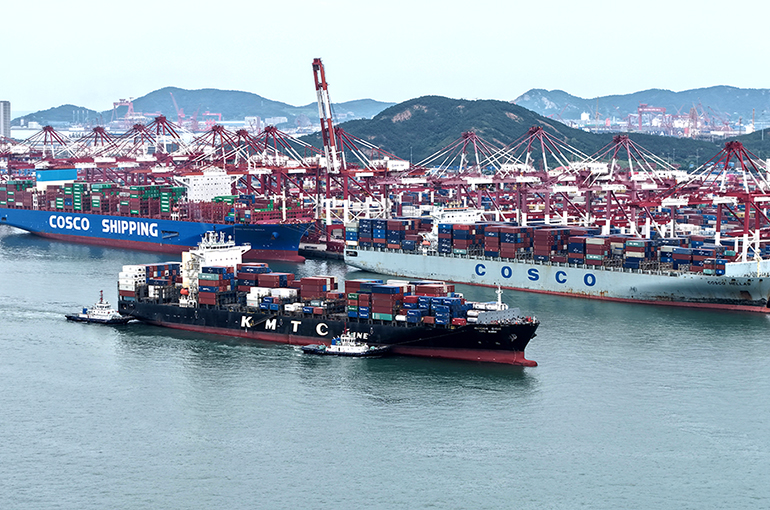Select Language:
Experts believe that the recent port fees imposed by the United States on vessels owned, operated, or constructed in China are unlikely to significantly impact China’s shipping and shipbuilding sectors as initially feared.
Initially, these new charges will increase operational expenses for Chinese shipping firms, which could subsequently influence shipyards and equipment suppliers. However, a shipping supply chain specialist pointed out that China’s strong supply chain infrastructure and advancements in renewable energy will continue to provide a competitive edge.
Starting October 14, the U.S. plans to implement a port-entry service fee of $50 per net ton for Chinese-owned or operated vessels. Additionally, ships that are built in China but are not owned or operated by Chinese companies will face a fee of $18 per net ton or $120 per container. All foreign-built vehicle carriers will be charged $150 per car-equivalent unit.
A maritime consultancy projects that these fees could add approximately $3.2 billion to the costs of the world’s top 10 shipping companies next year. China’s state-owned shipping giant, which operates several major lines, is expected to shoulder about half of this financial load.
Luo noted that because shipping contracts tend to be sizable, even initial deposits of 10 to 20 percent are substantial, reducing the likelihood of cancellations. Shipping companies, including major players like Cosco Shipping, have stated they do not plan to raise prices to compensate for the new port fees, especially given the current weak demand for freight. Instead, they plan to absorb the increased costs through operational efficiencies.
A representative from a logistics group mentioned that none of the industry peers they’ve spoken with have announced plans to hike prices due to the new U.S. fees.
Some analysts suggest that the long-term sustainability of these policies may be questionable, as China’s shipping and shipbuilding industries can remain competitive through continuous improvements in efficiency, technological investments, and robust supply chains.
The fees predominantly target Chinese-owned or operated ships, particularly those engaged on U.S. routes, regardless of the vessels’ country of design or construction. An executive from a leading shipbuilder highlighted that most of their orders extend into 2029 and are primarily from Asian and European clients, with no U.S. clients currently involved.
Research indicates that China holds over 40 percent of the global shipbuilding market, surpassing South Korea and Japan by a significant margin.






